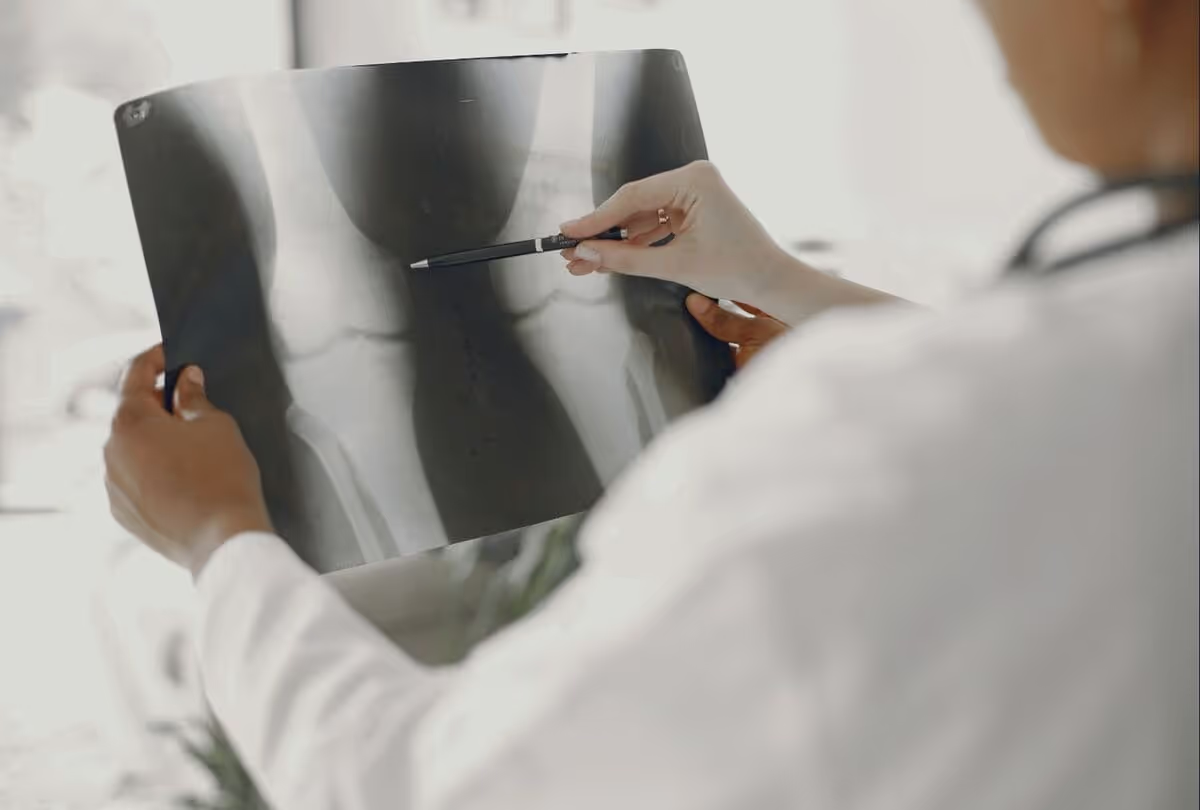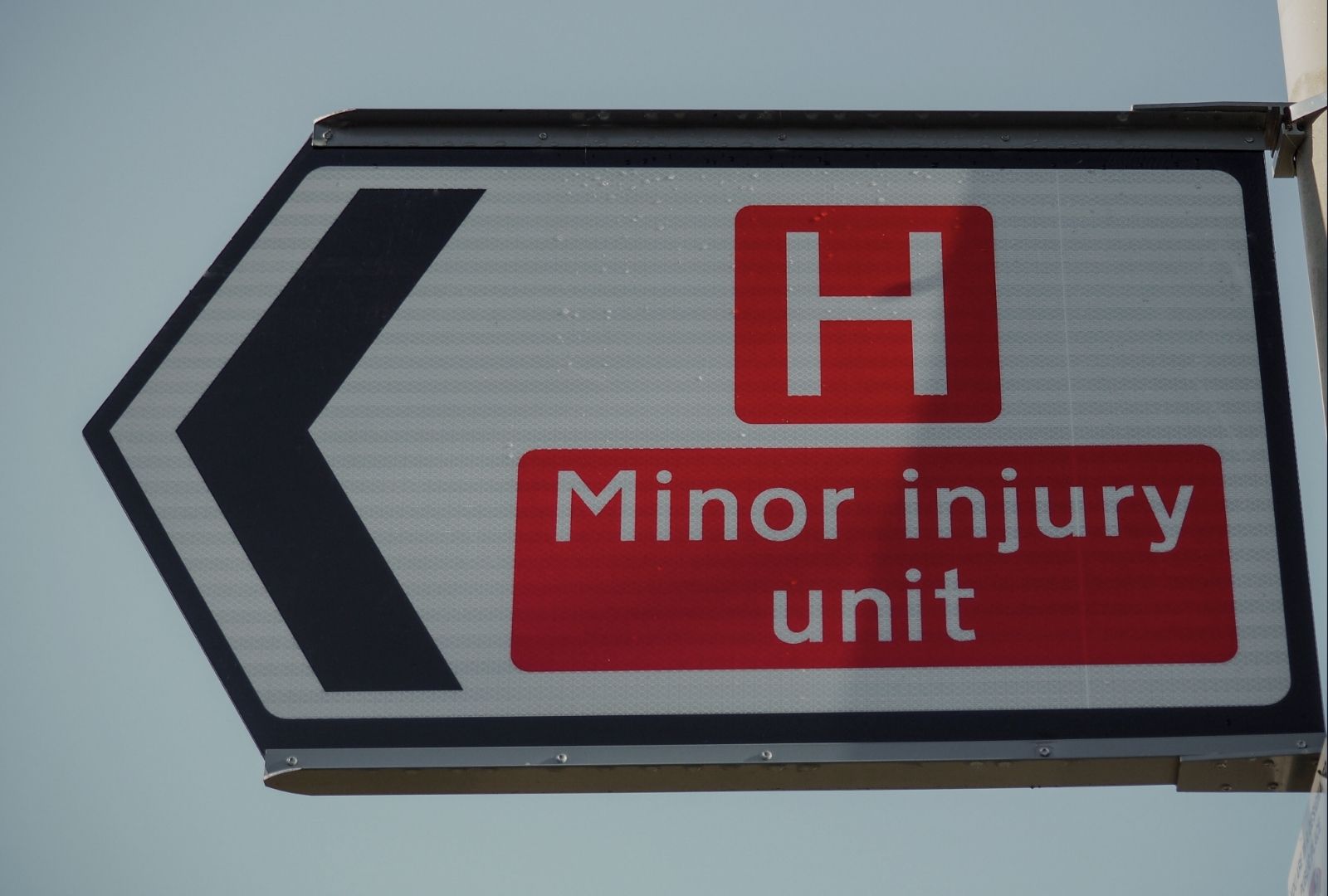A soft tissue injury car accident involves damage to muscles, ligaments, or tendons caused by sudden impacts or jolts during a collision. These injuries, although often not immediately visible, cause significant pain, limited mobility, and prolonged recovery periods. Understanding common soft tissue injuries and how to effectively manage them ensures you receive proper medical care and fair compensation for your damages.
This guide explains typical soft tissue injuries from car accidents and practical steps for managing these cases effectively.
What Are Soft Tissue Injuries?
Soft tissue injuries refer to trauma affecting connective tissues such as muscles, tendons, and ligaments. Common causes include sudden jolts, whiplash movements, or impacts typically experienced in car accidents. Although these injuries may initially appear minor, they can result in chronic pain, mobility issues, and significant long-term medical expenses if untreated.
Common Types of Soft Tissue Injuries in Car Accidents
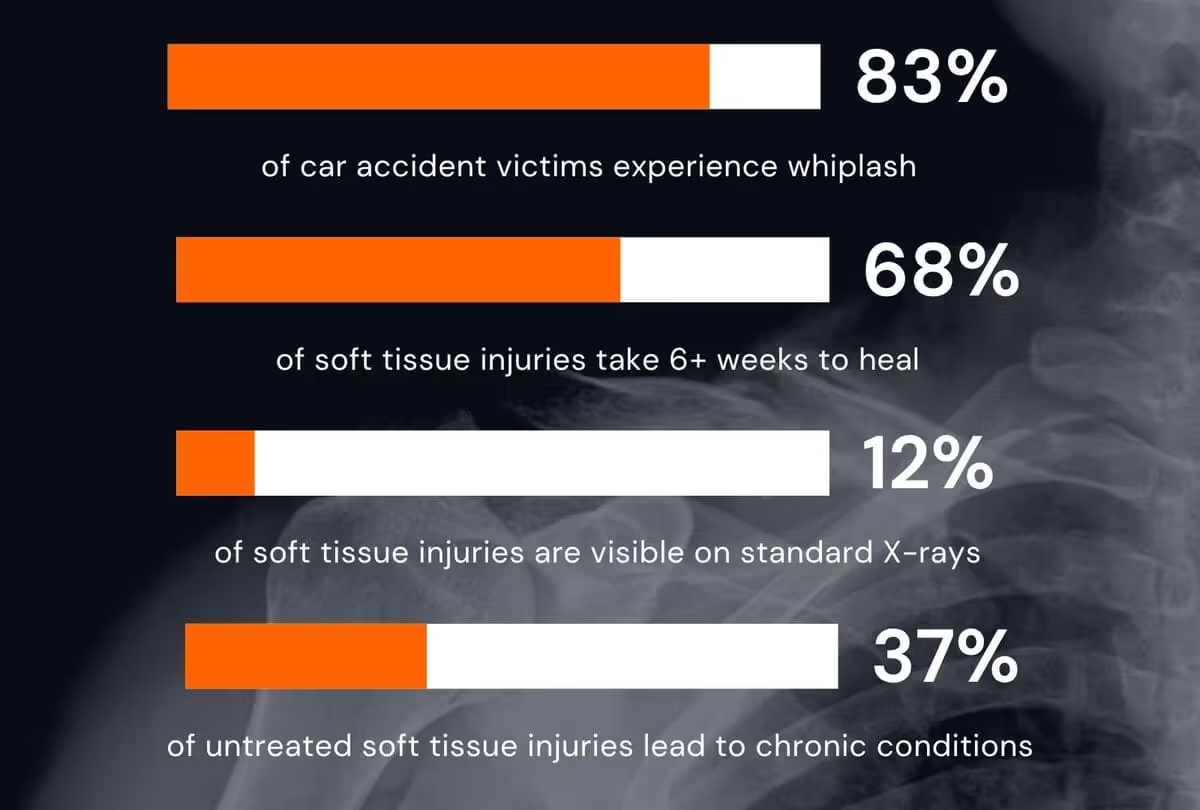
Here are the most frequent soft tissue injuries from car accidents:
1. Whiplash
Whiplash occurs when the neck experiences rapid forward-and-backward movements, causing ligament and muscle strain.
- Symptoms: Neck stiffness, headaches, dizziness, fatigue, shoulder pain.
- Treatment: Immediate medical attention, physical therapy, pain management medications.
2. Sprains and Strains
Sprains (ligament injuries) and strains (muscle or tendon injuries) frequently occur from sudden movements or impacts.
- Symptoms: Swelling, bruising, pain, reduced mobility.
- Treatment: Rest, ice, compression, elevation (RICE method), physical therapy.
3. Contusions (Bruises)
Contusions result from blunt force impacts, causing blood vessels beneath the skin to rupture.
- Symptoms: Pain, discoloration, tenderness, localized swelling.
- Treatment: Ice application, rest, and anti-inflammatory medication.
4. Torn Ligaments or Tendons
Severe impacts may cause partial or complete tearing of ligaments or tendons, leading to significant pain and loss of mobility.
- Symptoms: Severe pain, instability of the joint, limited function.
- Treatment: Medical evaluation, possible surgical intervention, extensive rehabilitation.
Symptoms to Watch for After a Car Accident
Soft tissue injuries often present subtle or delayed symptoms. Stay vigilant for:
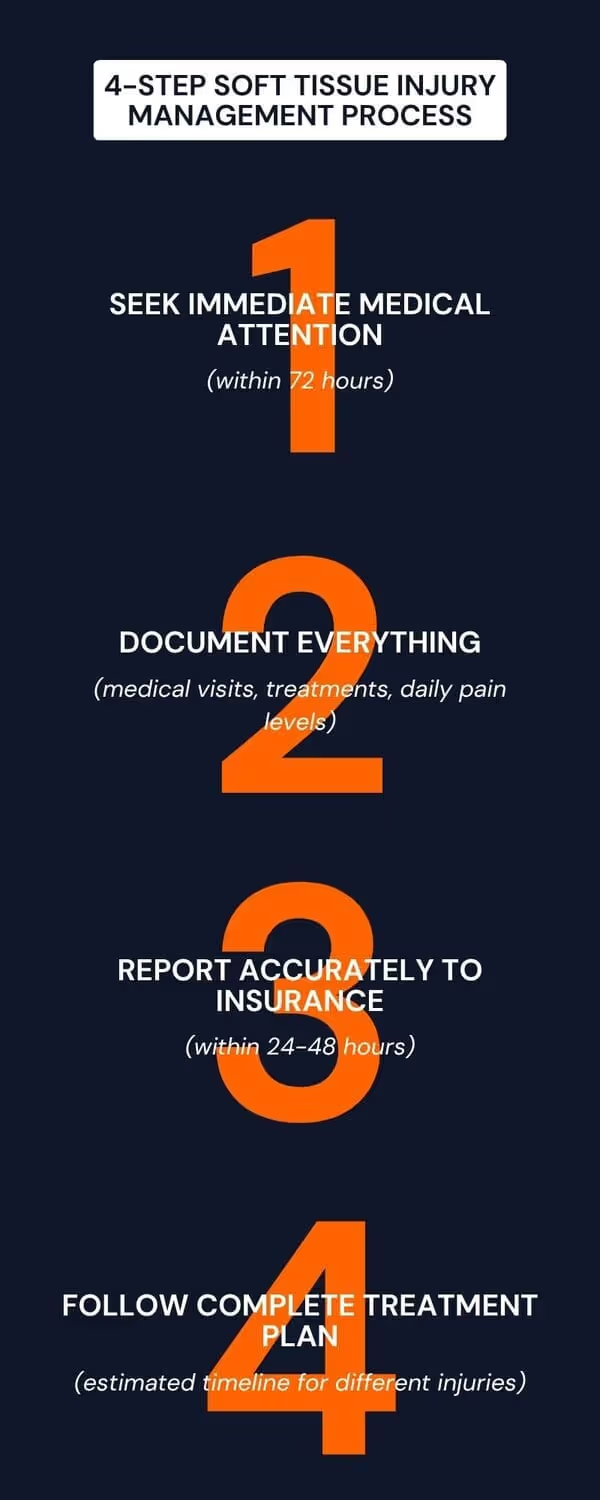
- Persistent pain or discomfort that doesn't fade within a few days.
- Swelling or bruising around affected areas.
- Difficulty moving or decreased range of motion.
- Stiffness or soreness that worsens over time.
Early recognition of these symptoms ensures timely treatment and documentation, essential for insurance claims.
How to Handle a Soft Tissue Injury After a Car Accident
Follow these steps to effectively manage soft tissue injuries from car accidents:
Step 1: Seek Immediate Medical Care
Always seek prompt medical evaluation after a collision, even if symptoms appear mild initially.
- Immediate treatment prevents further damage.
- Medical documentation substantiates injury claims clearly.
Step 2: Thoroughly Document Injuries and Treatment
Comprehensive documentation strengthens your claim significantly.
- Keep detailed records of doctor visits, therapies, medications, and rehabilitation sessions.
- Photograph visible injuries like bruising or swelling frequently to illustrate progression or healing over time.
Step 3: Report the Accident to Your Insurance Company
Notify your insurer within 24–48 hours of the accident, clearly stating your injuries and providing relevant medical documentation.
- Accurate, timely reporting prevents insurance disputes.
- Clearly describe injuries based on medical evaluations.
Step 4: Manage Pain and Recovery Effectively
Proper management of recovery promotes healing and validates your injury claim:
- Follow medical advice strictly.
- Participate fully in recommended physical therapy or rehabilitation sessions.
- Document ongoing recovery progress and challenges.
Can Soft Tissue Injuries Lead to Long-Term Complications?
Soft tissue injuries, if untreated or improperly managed, can lead to chronic pain, permanent mobility limitations, and reduced quality of life. Common long-term complications include:
- Chronic neck or back pain.
- Persistent headaches or migraines from whiplash.
- Recurring joint instability or weakness.
Seeking thorough treatment and fully documenting ongoing impacts ensures fair compensation for current and future medical expenses.
How Do Insurance Companies View Soft Tissue Injuries?
Insurance companies often scrutinize soft tissue injuries carefully, due to their subjective nature and lack of immediate physical evidence.
- They may initially undervalue claims, offering lower settlements.
- Thorough medical records, detailed treatment documentation, and expert evaluations effectively demonstrate injury seriousness.
Hiring an experienced attorney ensures insurance companies fairly assess your injury’s true extent and compensate accordingly.
Should You Hire an Attorney for Soft Tissue Injury Cases?
Consulting a car accident attorney significantly improves outcomes in soft tissue injury cases. Attorneys advocate effectively by:
- Clearly documenting and demonstrating injury severity.
- Countering insurance skepticism about subjective injury symptoms.
- Negotiating assertively to maximize settlements covering medical costs, lost wages, and pain and suffering.
Hiring a professional advocate greatly enhances your settlement potential.

Average Compensation for Soft Tissue Injuries from Car Accidents
Settlement amounts for soft tissue injury car accident claims vary widely, influenced by injury severity, documentation quality, and negotiation skill.
- Minor soft tissue injuries (minor sprains, bruising) may result in settlements ranging from $2,000–$15,000.
- Moderate injuries (significant whiplash, torn ligaments) typically range from $15,000–$50,000 or higher.
- Severe or chronic soft tissue injuries potentially requiring surgery or ongoing treatment may result in settlements over $50,000, depending on injury severity and impact on quality of life.
How to Maximize Car Accident Settlement Amounts After an Injury
To further enhance your understanding, explore additional strategies on how to maximize car accident settlement amounts after an injury. This resource provides practical tips for documenting evidence, accurately reporting injuries, effectively negotiating with insurers, and leveraging professional legal support to increase your settlement value.
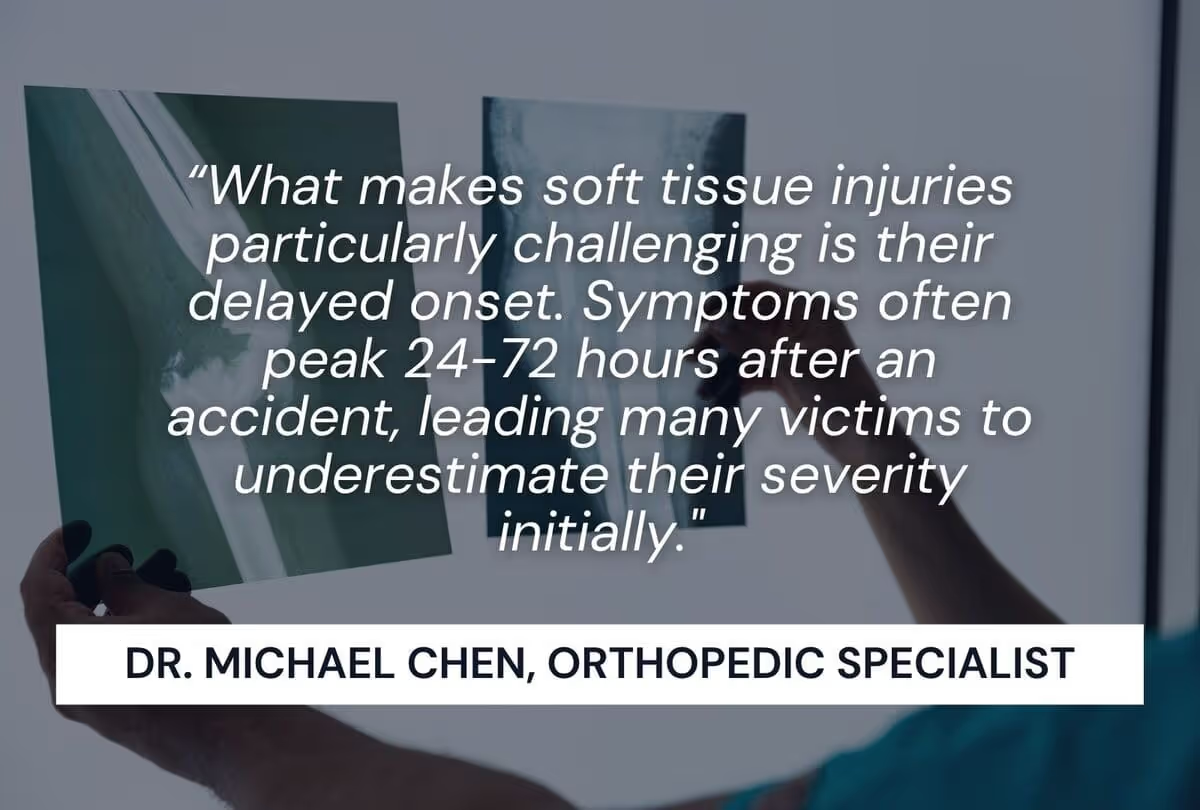
Mistakes to Avoid with Soft Tissue Injury Claims
Avoiding common mistakes helps ensure successful claims:
- Delaying medical attention: Prompt care prevents insurers from questioning injury severity.
- Accepting early, low settlement offers: Carefully evaluate and negotiate initial proposals.
- Underestimating long-term impact: Clearly document ongoing medical treatments and potential chronic pain risks.
Preventing these errors safeguards your compensation and supports your recovery.
Conclusion: Successfully Handling Soft Tissue Injury Car Accident Cases
Managing soft tissue injuries effectively involves immediate medical evaluation, diligent injury documentation, careful insurance communication, and professional legal support. Clearly understanding injury symptoms, potential complications, and effective management strategies ensures you receive appropriate medical care and maximum compensation for injuries sustained in car accidents.


